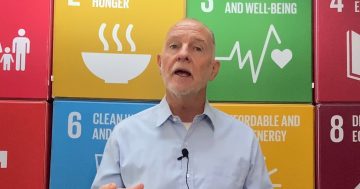 The Australian Institute of Health and Welfare (AIHW) has declared Australia to be generally healthy however it admits almost half the population are living with common chronic health conditions.
The Australian Institute of Health and Welfare (AIHW) has declared Australia to be generally healthy however it admits almost half the population are living with common chronic health conditions.
According to the Institute’s two-yearly report card Australia’s health 2022, Deputy Chief Executive Matthew James said the report came out at an important time as Australians continue to experience the effects of the COVID-19 pandemic.
“In 2022, no health issue stands above, or has had as wide-reaching impacts on our population and health system with these affects to be felt for many years to come,” Mr James said.
“Alongside the health impacts of the pandemic, by bringing together multiple data sources, the report provides a holistic view of the health of Australians and explores topical health issues including factors that influence our health, mental health and changes to mortality over the past 100 years.”
He said Australians were living longer, with life expectancy at birth coming in at 83.0 years in 2020, the sixth highest among the 38 Organisation for Economic Co-operation and Development countries.
“But with a population that is living longer we are now experiencing higher rates of chronic and age-related conditions, such as dementia,” the Deputy Chief Executive said.
“For example, we know that older Australians use a higher proportion of hospital and other health services and 54 per cent of all subsidised medicines were dispensed to people aged 65 and over,” he said.
“Despite the number of Australians experiencing chronic health conditions, there have been marked improvements in many areas of health, including cancer survival, infant mortality, and deaths from coronary heart disease.”
Mr James said that in 2020–21, almost half (47 per cent, or 11.6 million) of Australians were estimated to have one or more common chronic health conditions, including diabetes, cancer, mental and behavioural conditions, and chronic kidney disease.
He said many chronic health conditions shared preventable risk factors, such as smoking, excessive alcohol consumption, and not getting enough exercise – “in fact, over one-third (38 per cent) of our nation’s ‘disease burden’ is due to preventable risk factors”.
He said Australians’ average life satisfaction fell substantially during the early stages of the pandemic (from 6.9 out of 10 in January 2020 to 6.5 in April 2020) but by January 2021, the average level of life satisfaction had returned to pre-pandemic levels
“However, in August 2021 life satisfaction was back to the same level as April 2020,” Mr James said.
“As of April 2022, life satisfaction is yet to return to pre-pandemic levels.”
He said despite a rise in the use of mental health services and an increase in psychological distress, COVID-19 had not been associated with a rise in suspected deaths by suicide.
AIHW’s Report can be viewed online at this PS News link.











